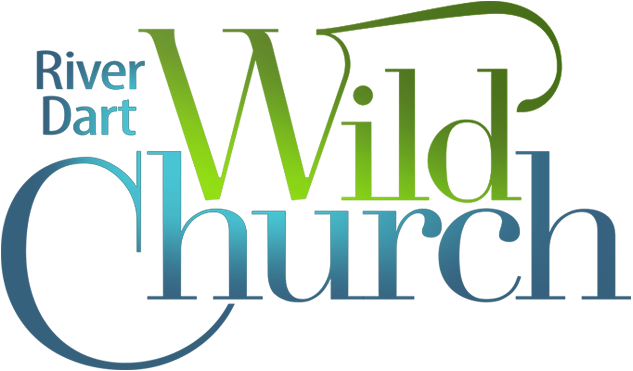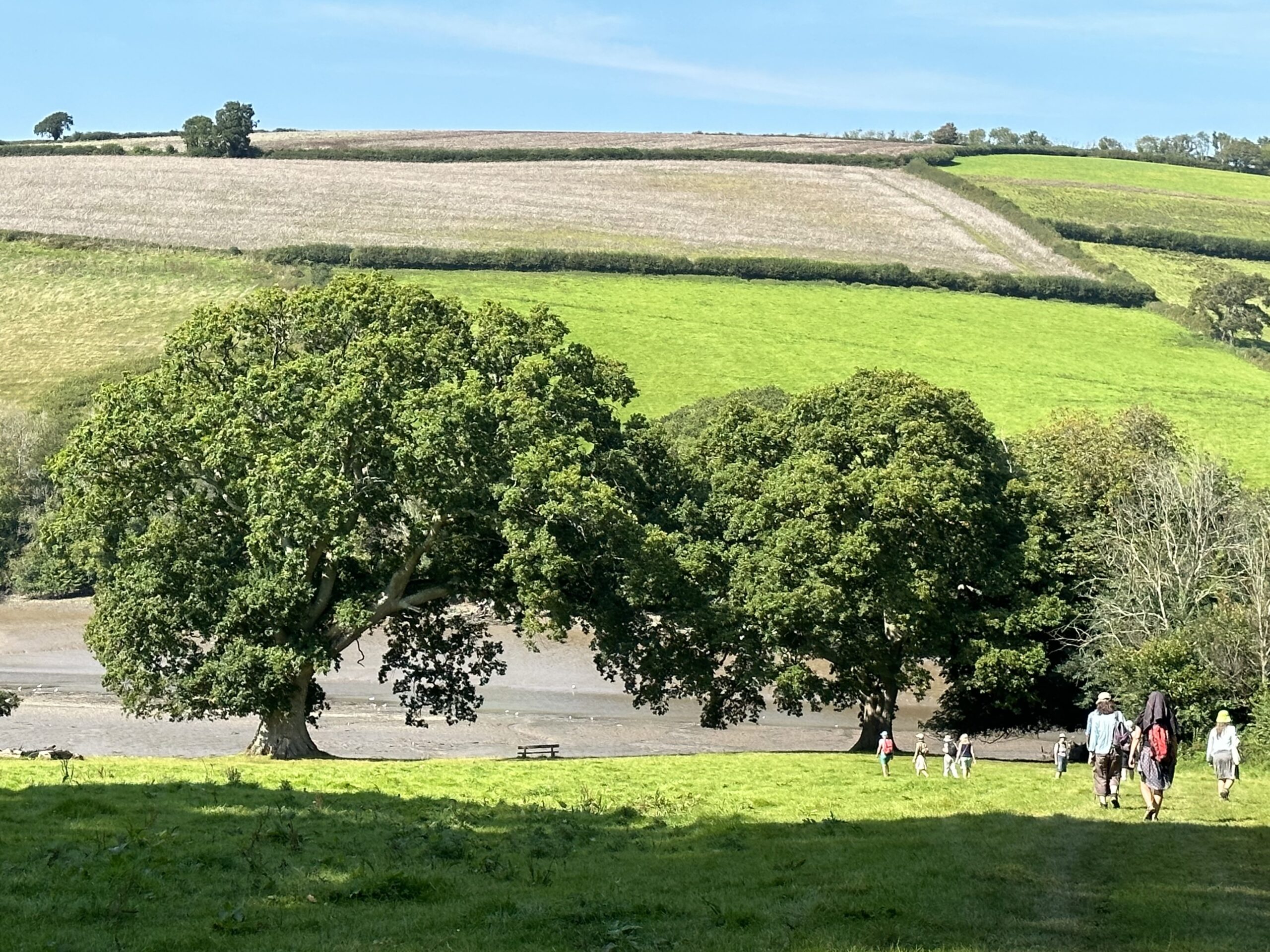We were blessed with glorious late summer sunshine for our third ‘Salmon and Saltmarsh’ pilgrimage on the first Sunday of September. This stage of our River Dart Way, between Cornworthy and Ashprington, is always particularly picturesque and yet today it seemed especially enchanting. This part of the route includes some battered but beautiful pockets of saltmarsh, along the well grazed and well walked edges of Bow Creek. Here the fresh water of Harbourne River, one of the River Dart tributaries, meets the tides and winds its way towards the sea.
Click here for a short version of this post on facebook.
Our guide today was environmental social scientist, Dr Fiona Tilley, who shared some thought provoking reflections on animism and the life giving importance of margins, as we gathered in the welcome shade of St Peter’s Church porch, sitting on the cool stone benches around the walls and savouring tea and rich chocolate cake. The churchwardens and congregation of St Peter’s are exemplary in their welcome and in the care given to their beautiful church. They had recently celebrated a local wedding and, picking up a spare copy of the order of service, I found this poem by Adrienne Rich, which felt perfect for our way of silent pilgrimage:
The heart does not speak in words,
It speaks in silences
That are deeper than speech
And more eloquent.
It speaks in the spaces between words,
In the pauses and the breaths,
In the way that the eyes meet
And the hands touch.
It speaks in the way that we listen,
In the way that we hear
What is not said,
What is not even thought.
The heart does not speak in words,
But it speaks to the heart.
And when we listen,
We hear its message.
Tilley invited us to reflect on the sacred nature of all life and, through her own quiet presence, invited us into being more present with the natural world we are part of. Bees circled overhead and woodlice wandered below, as a soft breeze swept around us and whispered through the trees and the birdsong. The ancient stones of the church were rich with lichen and the arched doorway between church building and church of the wild felt like a Way between worlds. It was another good moment for poetry, this time by Jay Ramsay, who was himself a great lover of pilgrimage and of Devon. Here’s the first stanza:
THE INVITATION
In the church at the bottom of the world
where there has been church for a thousand years
is the silence at the depths of your body,
deepening like a shelf reaching under your heart
where the densely wooded valley slopes outside
and steepens; uninhabited, unspoilt, unpolluted
as you walk on its high paths above the dreaming sea
sheltered by the leaves’ green canopy like an animal …
Soon we were silently setting off through the nearby farmyard, wandering through a wooded valley slope with its ancient oaks and Devon Red cows, and picking blackberries along the deep lane. Tilley commented that it seemed like passing through a birth canal to then suddenly find ourselves coming out into open space again, with a wide vista of fields unfurling down to the saltmarsh and the low tide mud of the creek under a big blue sky. As one pilgrim commented later: the sense of expansion and beauty made her gasp.
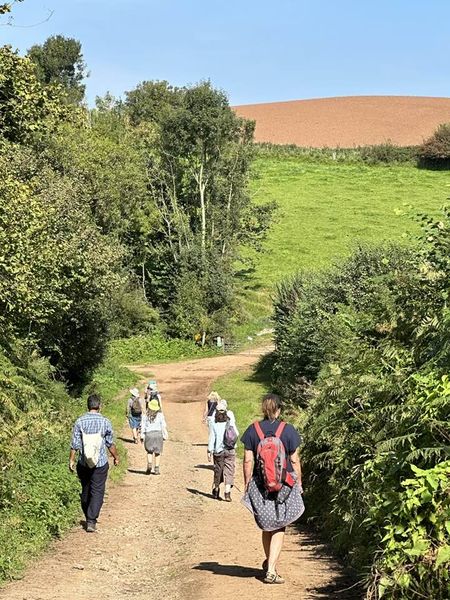
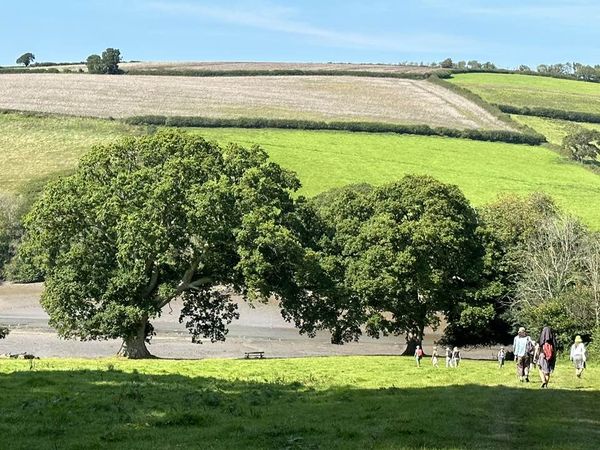
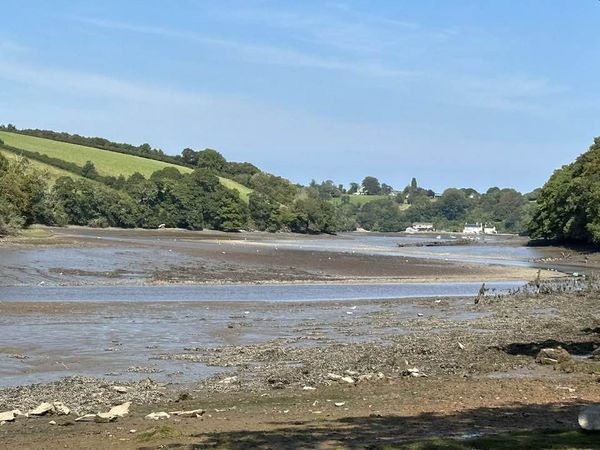
We paused here to rest, reflect and explore the saltmarsh. This particular part of our walk highlighted the vulnerability of this precious ecosystem, as it struggles to survive under the pressures of tramping feet, digging dogs, grazing cows, camping and canoes. It is so easy to overlook the low growing, straggling plants of the saltmarsh as they carve out life in the inhospitable conditions between the tides. Yet watch where you step, look closely and you will see stars in the mud, as tiny bright flowers open to the sun. Before we began this project, I didn’t fully understand the wider significance of these margins and of the deep mud revealed by the falling tide. Today this rich, carbon capturing depth was busy with birds and the air was full of the sounds of all the different forms of life that thrive here. Looking down the narrow winding channel of the departing water, we could see right down to the Dart and Duncannon, where we have journeyed by canoe in the past. Today however we were turning upstream to wander carefully along the shore, above the line of the saltmarsh. I stopped to take a few photos of lesser sea spurrey, sea aster and to have a little nibble of some rather muddy marsh samphire and sea plantain.
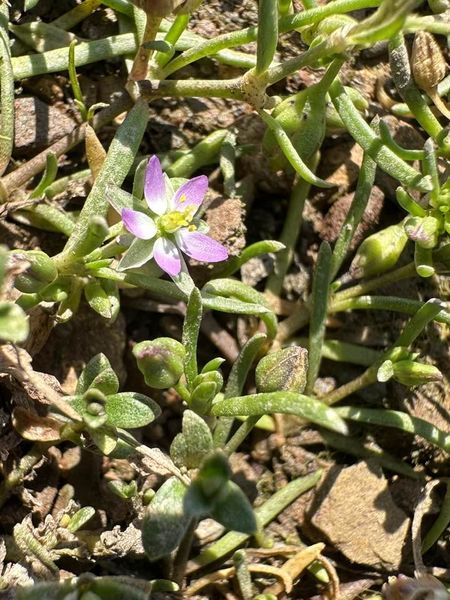
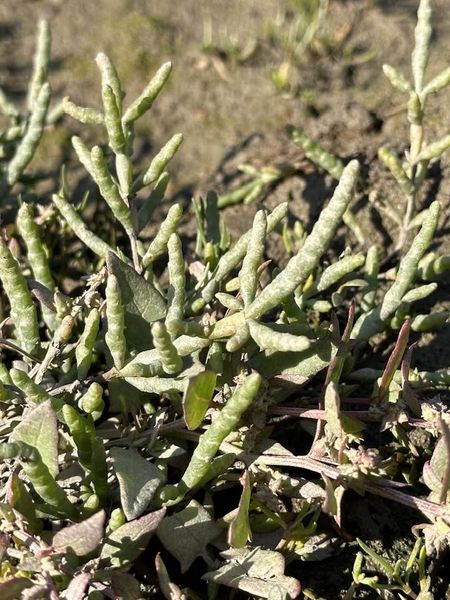
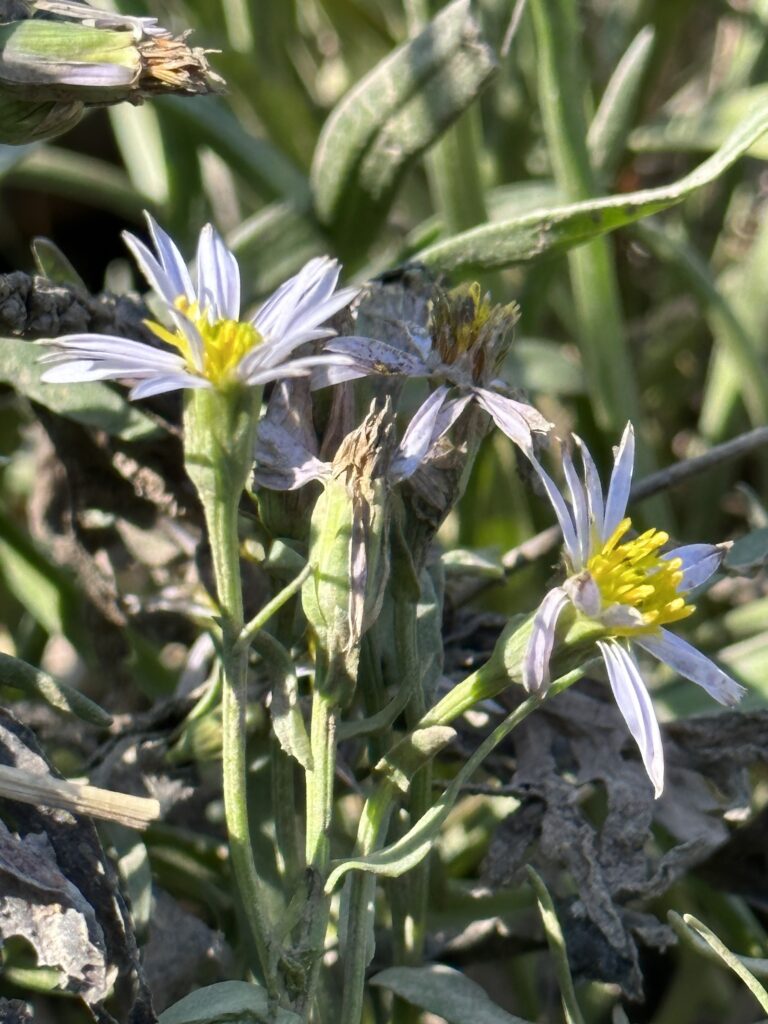
Then gradually the path climbed away from the water and through meadows, hazel coppice and community woodland until it crossed another tributary (which seems to be called simply ‘River Water’) at Tuckenhay. This pretty hamlet, whose Middle English name atte oken hay apparently means ‘at the oak enclosure’, seemed full of interesting and friendly characters today: one drinking tea in a lane-side deckchair who welcomed us as we passed, while others waved cheerfully from their cavalcade of classic cars. Once on the lanes, it was tempting to stop at the pub, the Malsters Arms, along the way. When I lived at the Sharpham boathouse in my early twenties, I can remember cayaking here to eat free sausages at the bar, while being regaled with red wine fuelled stories by the owner, TV chef Keith Floyd. It was important not to get too drunk or forget the tides, lest I ended up having to crawl back to bed over several feet of that deep Dart mud in the moonlight! It was also during that time that I would watch a local family fishing for salmon. They had a special license for a seine netting boat, which had been held by their family for generations, and I found it quietly mesmerising to watch them go out in the early morning and shoot the long net in a smooth curve out into the river and back towards the shore. It feels both sobering and moving to reflect on how I have been walking, paddling, swimming and living with the River Dart for over thirty five years now.
Returning to the present, we were soon approaching further temptation in the form of the Waterman’s Arms at Bow Bridge, but turned off the road just before to cross the stepping stones which are revealed at low tide. Some pilgrims jumped confidently from stone to stone, while others waded more slowly and carefully through the cool water. This turned out to be good preparation for a long hot climb to Ashprington, which made the beer festival, at the top of the lane at the Durant Arms, almost irresistible – especially as there was some rather fine folk music being played. This certainly put a spring in my step for the final push to St David’s churchyard. Here our pilgrimage came to as a close as we shared a blackberry communion and reflections from our wonderful three hours together. Once again I felt deep gratitude to the river and all the life it supports, including in the saltmarsh. Deep thanks also to our guide, Tilley, and to all the pilgrims for their good company and wild wisdom during another blessed afternoon on our River Dart Way.
Our next pilgrimage is from Ashprington to Totnes on October 1st and will be guided by ‘forest bathing’ guide Clare Coyne.
